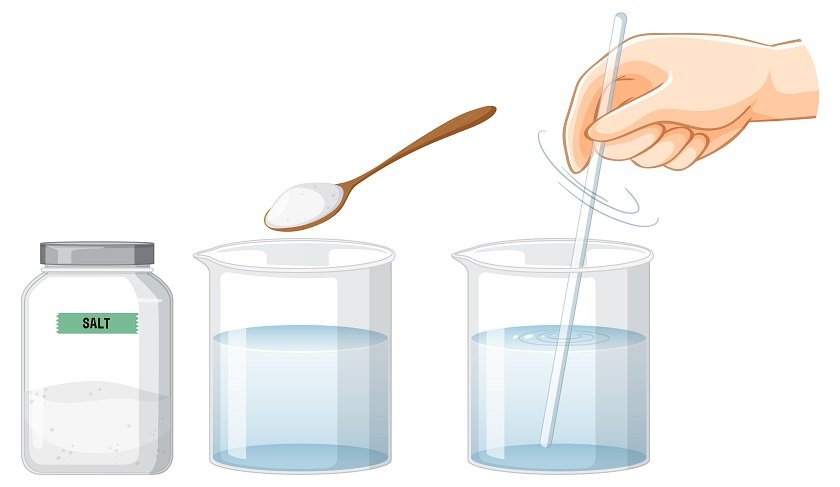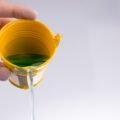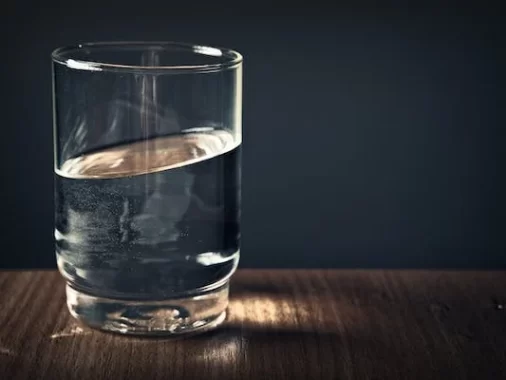100 ml is approximately 3.3814 US fluid ounces or 3.5195 UK fluid ounces.
In a globalized world where recipes, scientific formulas, and healthcare directives traverse borders, the need to understand different units of measurement is ever more critical. One common conversion you might encounter is turning 100 milliliters (ML) into ounces (OZ) or 100 ml to oz. Here we delve into this conversion, offering a deep understanding, facilitating seamless transitions between the metric and imperial systems and also calculate the result of how many ounces is 100 milliliters .
A Deep Dive into the Units
We begin with a deep understanding of the primary units in this conversion.
What is Milliliters (ML) ?
In the metric system, a millilitre (ML) is a unit of volume measurement. It is one-thousandth of a litre (1/1000), making it a tiny unit for measuring liquids and fluids. Millilitres are often used to express the volume of things such as water, medicine, or ingredients in recipes in scientific, medical, and daily measurements. 100 millilitres (100 ML) is approximately equivalent to 3.38 fluid ounces in the United States, and 100 ml to oz is equivalent to 3.52 fluid ounces in the United Kingdom in the context of the article you gave.
What is Ounces (OZ)?
Ounces (abbreviated “OZ”) are measuring units that are often used to express both mass and volume in many settings. The article you linked to expressly mentions fluid ounces, which are used to quantify the volume of liquids and fluids. Fluid ounces are classified into two types:
US Fluid Ounce: A fluid ounce is defined in the United States customary system of measurement as 1/128 of a US gallon, or equivalently, 1/16 of a US pint. This is equivalent to 29.5735 millilitres.
UK (Imperial) Fluid Ounce: A fluid ounce is defined as 1/160 of an imperial gallon or 1/20 of an imperial pint in the United Kingdom imperial system of measurement. This is roughly comparable to 28.4131 millilitres.
The discrepancy between these two meanings is significant, particularly in contexts requiring exact measures, such as cookery or scientific operations. While fluid ounces are frequently used to measure liquid volume, ounces can also refer to ounces of weight when measuring solid mass. Depending on the context, the type of ounce being referred to, whether fluid ounces or weight ounces, should be mentioned.
What is the difference between a US ounce and a UK ounce?
The distinction between a US ounce and a UK (Imperial) ounce is due to the differing definitions and measures used in the two separate measurement systems. The distinction in this situation is due to fluid ounces, which are volume measurement units. Here’s how a US fluid ounce differs from a UK fluid ounce:
US Fluid Ounce:
- In the United States customary system of measurement.
- Defined as 1/128 of a US gallon or 1/16 of a US pint.
- Approximately equal to 29.5735 milliliters.
- Commonly used in the United States for measuring the volume of liquids in recipes, beverages, and other applications.
UK (Imperial) Fluid Ounce:
- In the United Kingdom imperial system of measurement.
- Defined as 1/160 of an imperial gallon or 1/20 of an imperial pint.
- Approximately equal to 28.4131 milliliters.
- Commonly used in the United Kingdom and some other countries following the imperial system for measuring the volume of liquids.
100 ML to OZ: Unlocking the 100ml into oz Conversion
With the background in place, we can unlock the exact conversions:
1 US Fluid OZ = 29.5735 ML
1 UK Fluid OZ = 28.4131 ML
- US Calculation: 100 ML / 29.5735 ML ≈ 3.3814 OZ, depicting the volume in the US customary measurement.
- UK Calculation: 100 ML / 28.4131 ML ≈ 3.5195 OZ, a representation in the UK imperial measurement system.
Where This Knowledge is Power
Why bother with this conversion? Here’s where this knowledge translates to power:
- In the Kitchen: Imagine adapting a British recipe to US measurements or vice versa; this conversion is your key tool.
- Scientific Research: In scientific settings, exact measurements are pivotal; understanding this conversion ensures precision.
- Healthcare Sector: Dosage instructions sometimes cross borders, making this conversion essential in healthcare.
Smart Conversion Tips
To master the art of conversion, here are some insightful tips:
- Context is Key: Knowing the regional measurement system in use is vital.
- Tool Precision: Employ tools that showcase both ML and OZ to foster accurate conversions.
- Double-Check: If unsure, double-checking your conversion can avert mistakes.
Common Conversions from ML to OZ
| ML | US OZ (approx.) | UK OZ (approx.) |
|---|---|---|
| 1 | 0.0338 | 0.0352 |
| 2 | 0.0676 | 0.0704 |
| 5 | 0.1691 | 0.1759 |
| 10 | 0.3381 | 0.3519 |
| 50 | 1.6907 | 1.7598 |
| 100 | 3.3814 | 3.5195 |
| 150 | 5.0721 | 5.2793 |
| 200 | 6.7628 | 7.0389 |
| 250 | 8.4535 | 8.7988 |
| 300 | 10.1442 | 10.5586 |
| 350 | 11.8349 | 12.3184 |
| 400 | 13.5256 | 14.0782 |
| 450 | 15.2163 | 15.8380 |
| 500 | 16.9070 | 17.5975 |
| 750 | 25.3605 | 26.3969 |
| 1000 | 33.8140 | 35.1959 |
FAQs:
How many ounces is 100 ml?
100 ml is approximately 3.3814 US fluid ounces or 3.5195 UK fluid ounces.
Is 100 ml the same as 3 oz?
100 ml is not exactly the same as 3 oz, but it is close. 100 milliliters to ounces is approximately 3.3814 US fluid ounces and 3.5195 UK fluid ounces. So, it is just slightly over 3 ounces in both the US and UK measurement systems. If a rough approximation is acceptable for your purposes, then you might round 100 ml to 3 oz.
How many ounces is 750 ml?
750 ml is approximately 25.3605 US fluid ounces or 26.3969 UK fluid ounces.
How many ounces is 500 ml?
500 ml is approximately 16.907 US ounces or 17.5975 UK ounces.
what is 160 mL in Oz?
160 milliliters is approximately equal to 5.414 ounces.
How much is 100 milliliters in ounces?
100 milliliters is approximately 3.38 fluid ounces.
What is 100 ml to ox?
100 milliliters (ml) is approximately 3.38 fluid ounces (fl oz).
100 ml is how many ounces?
In the United States (US) measuring system, 100 millilitres (100 ml) is roughly comparable to 3.38 fluid ounces. In the United Kingdom (UK) or Imperial measurement system, it is about comparable to 3.52 fluid ounces. As noted in the article you gave previously, the actual conversion may differ slightly depending on whether you use the US or UK fluid ounce.
How many ounces in 100 ml or 100ml into oz in US Fluid Ounce?
In the US customary measurement system, 100 milliliters (100 ml) is approximately equivalent to 3.38 US fluid ounces.
What devices are available to convert ounces to milliliters (OZ to ML) and how do they simplify the conversion process?
There are several gadgets and tools available to help in the conversion of ounces (OZ) to millilitres (ML). Digital kitchen scales with built-in conversion features are a popular choice, allowing you to easily move between units. Various smartphone apps and web converters are also available, putting quick and accurate conversions at your fingertips. Medical dosage cups and laboratory equipment are built to handle exact fluid volume conversions for more specialised applications. These gadgets and instruments have proven indispensable in a number of scenarios, ensuring precision and efficiency while working with various measuring systems, whether converting from OZ to ML or specifically 100ml into oz. As a result now converting There are several gadgets and tools available to help in the conversion of ounces (OZ) to millilitres (ML). Digital kitchen scales with built-in conversion features are a popular choice, allowing you to easily move between units. Various smartphone apps and web converters are also available, putting quick and accurate conversions at your fingertips. Medical dosage cups and laboratory equipment are built to handle exact fluid volume conversions for more specialised applications. These gadgets and instruments have proven indispensable in a number of scenarios, ensuring precision and efficiency while working with various measuring systems, whether converting from OZ to ML or vice versa. As a result now converting 100 ml to oz or calculating how many ounces is 100ml is now very much esier than early days.
Embarking on the journey from 100 ML to OZ or how many ounces is 100ml is more than a mathematical maneuver; it’s a pathway to embracing a globalized world with a nuanced understanding of different measurement systems. It facilitates collaborations, ensures accurate scientific outcomes, and makes experimenting with international cuisine a breeze. As you venture into the diverse world of measurements, keep the differences between US and UK fluid ounces in mind, applying the correct conversion factor accordingly. With this knowledge in your toolkit, you’re well-equipped to navigate the intricacies of liquid conversions, making the process both simple and accurate.





